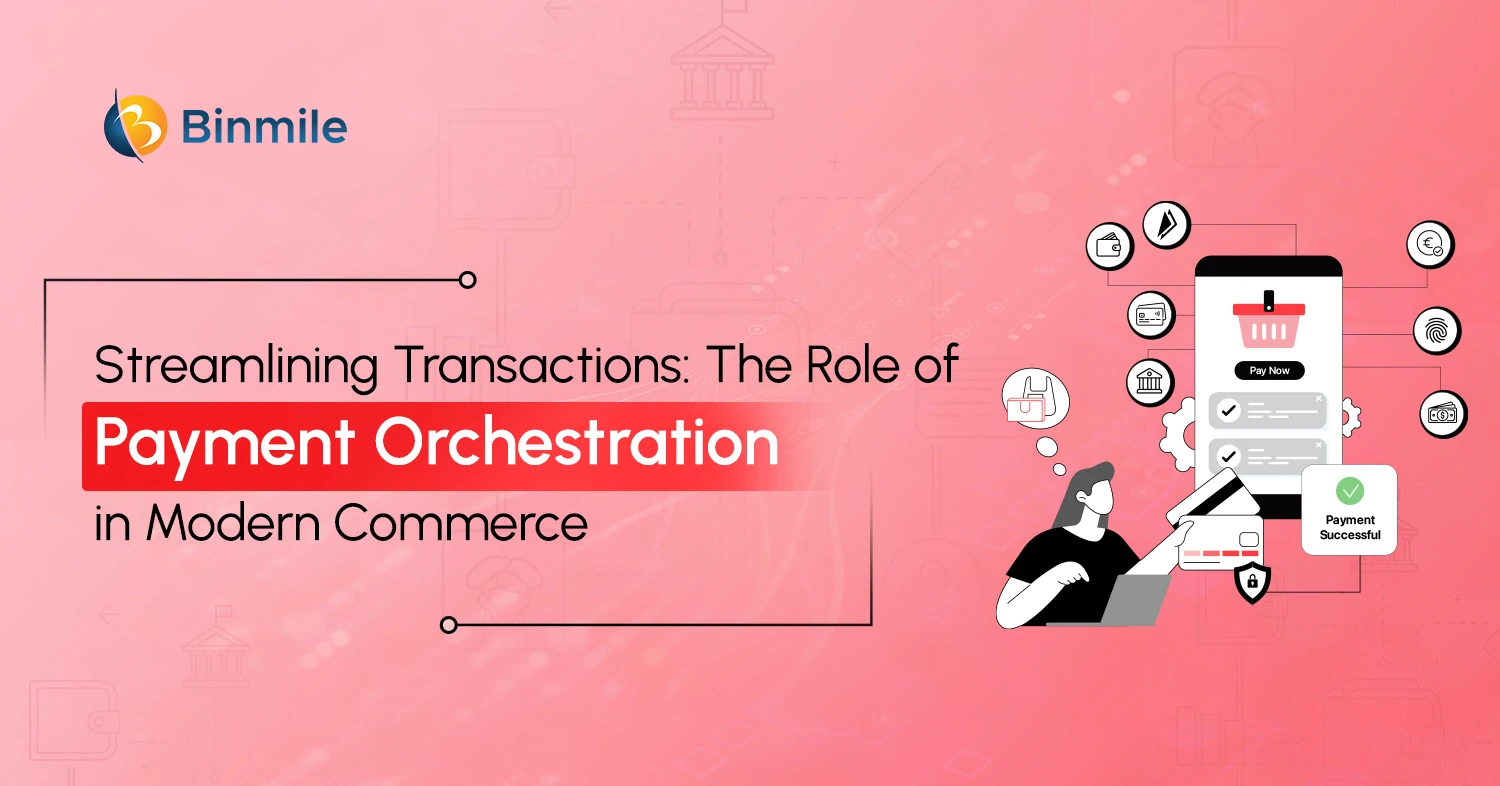With so many e-commerce websites available online, it’s difficult for businesses to stand out. A versatile, secure, highly functional, and highly interactive website makes a significant difference in determining which e-commerce businesses stay relevant and lead the market. That’s where personalization in e-Commerce comes in. It can shape the entire customer journey and influence whether a business stays relevant or fades out.
A customer-centric business requires solutions that can evolve and adapt to the shifting market, particularly with emerging models like subscription-based platforms, which can become complex quickly. Therefore, it’s crucial to understand the benefits of e-Commerce personalization and how to implement it effectively before beginning the e-commerce website development journey. In this blog, we’ll explore the essentials of personalization in e-commerce, how it works, and why it matters.
What is Personalization in E-commerce Exactly?
In simple terms, personalization in e-Commerce is the practice of tailoring online buying experiences to individual customers by delivering relevant content, product recommendations, offers, shopping experiences, and quick customer support based on their preferences, buying behavior, and demographics. These customer datasets are meticulously analyzed (in a reasonable way) by using AI-powered technologies to derive insights into what customers want and then personalize services or products accordingly.
In addition, the global e-commerce market is projected to reach a market volume of $5.89 trillion by 2029, generating a CAGR of 8.02% from 2025 to 2029. It demonstrates the importance of retailers in enhancing customer satisfaction and engagement. E-commerce personalization strategy helps them turn every shopping interaction into a meaningful and rewarding experience across channels, on-site, and in-app.
Note that a brand’s personalization in the e-Commerce journey spans several key areas, bringing forth improved brand awareness and product discovery, as well as driving repeat purchases.
Benefits of E-commerce Personalization Strategy
1. Enables Convenient Shopping Experience
Boosts sales as brands help customers cut through the clutter and find what they are looking for. By allowing you to create the best purchase intent for customers, it offers them product recommendations based on their browsing history
2. Improves Customer Loyalty
Brands can foster a higher level of customer loyalty by personalizing rewards and incentives tailored to each customer. With referral rewards, brands can also build better customer retention and engagement
3. Enhances Customer Experience
Personalization in e-Commerce offers products or services help customers narrow down their shopping preferences. It does so without overwhelming customers with excessive options, resulting in better engagement and a more positive customer experience.
4. Better Insights Into Customers
Customer data insights provide a deeper understanding of customers’ purchasing habits. This way, you can personalize recommendations, aligning with customers’ expectations. This enables you to re-strategize your personalization strategies and deliver to your customers what they’ve been looking for.
Transform your eCommerce with personalized app solutions to enhance engagement. Let’s build your app and drive conversions with tailored shopping experiences.
Personalization in E-Commerce: Proven Tactics for Driving Conversion
In this section, we cover what brands should do before launching their personalization in e-commerce strategy.

1: Understand Your Customers
You must have a comprehensive understanding of the customers you target. Before personalizing, ensure you have sufficient data reflecting each stage of the customer journey. Leverage data analytics services, email marketing tools, and pop-ups. Remember, a customer well-understood is a brand loyalty well earned.
2: Ensure High-Quality, Integrated Data
This is essential in the context of ensuring that data is structured, integrated, and made available for personalization. Therefore, E-commerce retailers should ensure that raw data collected from websites and different channels should not remain siloed through their e-Commerce personalization strategy.
3: Map the Customer Journey
Map out the buyer’s journey to build a personified shopping experience for your customers. It will help you figure out areas where you can incorporate personalization more effectively. You can also gain insight into the most effective personalization tactics to use for each segmented customer group.
4. Prepare for Omnichannel Personalization
While you can personalize the experience of your customers through your E-commerce websites, there are different channels you can use to personalize customer experiences. For example, you can leverage social media channels, live chats, and other communication channels for every customer interaction.
5: Define Personalization KPIs Early
Your strategies for implementing personalization in e-commerce are incomplete if you haven’t defined KPIs well early. Understand what decides the success of your plan: Are you aiming for higher conversion rates? Lower cart abandonment? Better engagement? Fortify against emerging e-commerce security threats? Set specific KPIs for each tactic to measure and refine your efforts meaningfully.
Also Read: What is Payment Orchestration in E-commerce
How to Start With Personalization in E-commerce: 7 Things to Know
Here’s a step-by-step process to help you develop e-commerce Solutions with practical tips for integrating personalization in E-commerce:

1. Tailor On-Site Content & Layouts
Personalize every interaction by analyzing browsing behavior, purchase history, and engagement patterns to surface content that resonates with individual needs. Use adaptive layouts and predictive algorithms to present high-impact offers, ensuring relevance across every touchpoint dynamically.
2. AI-Powered Product Recommendations
Analyze customer data using AI automation tools and provide product recommendations tailored to customers’ behavioral patterns, preferences, and geolocations. Leverage the Product Detail page (PDP) recommendations or maximize dynamic upselling to increase sales conversions.
3. Behavior-Based Emails
Brands can provide a personalized customer experience by sending newsletters or promotions tailored to customers’ historical data. The emails should be based on the behavioral patterns of customers in the past, such as recent views, purchases, or items in their cart. By using modular email design, marketers can quickly assemble personalized emails tailored to specific behaviors, such as product views, abandoned carts, or past purchases.
4. Implement Dynamic Pricing
Brands can utilize predictive analytics tools on their websites to analyze the latest market trends, shifts in customer behavior, competitors’ pricing models, and market forecasts. Based on this analysis, they can implement dynamic pricing in real-time to boost sales and personalize customer experiences.
5. Intelligent Search Personalization
Incorporating AI-powered search capabilities, such as personalized query recommendations and intelligent auto-completion. These features leverage historical customer data, including past search behavior, to deliver more accurate and relevant results.
As a result, this approach helps increase purchase intent, as customers can quickly find their desired products through a more intuitive and responsive AI-driven search experience.
6. Dynamic Retargeting Ads
Brands can use this E-commerce personalization strategy to attract customers who have abandoned their carts. Custom-tailored dynamic ads reflect relevant recommendations for customers based on their demographics, preferences, or previous online behavior, often tapping into FOMO in eCommerce marketing to create urgency and drive them back to complete the purchase.
7. Personalized Loyalty Programs
One of the winning E-commerce personalization tactics is by leveraging user-generated content. People appreciate content that resonates with their real experiences and aligns with their preferences. This is especially impactful in subscription-based e-commerce models, where building long-term trust and engagement is essential for the brand.
Elevate your ecommerce business with our custom solutions. Benefit from expert guidance and make your journey a success.
Popular e-Commerce Personalization Examples
- Amazon: Amazon’s “Frequently bought together” section is one of the finest e-commerce personalization examples. It simplifies the customer journey and makes it more satisfactory by suggesting additional products at checkout that customers can purchase together.
- Speedi: A famous E-commerce website based in Riyadh, Saudi Arabia, Speedi uses personalization tactics to boost customer retention rates and reduce cart abandonment. Using this tactic, the brand has increased its active customer base, boosted conversion rates by 28%, and earned customer loyalty six times.
- ASOS: An online fashion and cosmetic retailer, ASOS, as part of its D2C ecommerce strategy, leverages personalization in E-commerce by simplifying customers’ quests for products based on their search terms. It offers suitable recommendations on related products on the category and search pages.
Final Remarks on Personalization in e-Commerce
E-commerce personalization is a strategic business approach that online retailers can utilize to enhance customer experiences on their digital platforms. To implement personalization in your E-commerce business successfully, the most important thing is to gain absolute clarity on your customers’ understanding of their wants and preferences. Enhance your strategy by incorporating the right tech stack for eCommerce development to ensure seamless and effective personalization.
If the process seems overwhelming and time-consuming, consider hiring an app development company to build a loyal customer base for your E-commerce platform. Innovative e-commerce development solutions do more than just put you online; they transform how customers interact with your brand at every touchpoint.
Ready to build more innovative e-commerce experiences? Contact us to discuss the proper development solutions for your business.
Frequently Asked Questions
Evidence from different research groups suggests that modern customers expect brands to act according to their expectations, requirements, or discretion. They want a tailored shopping experience from an E-commerce brand. Brands need personalization to ensure they offer services or products in tune with customers’ expectations. It helps them increase their brand awareness and customer loyalty.
Personalization is tailoring a customer’s experience associated with digital shopping based on their preferences, browsing history, and behavioral patterns. On the other hand, customization is modifying a product in terms of color or size.









